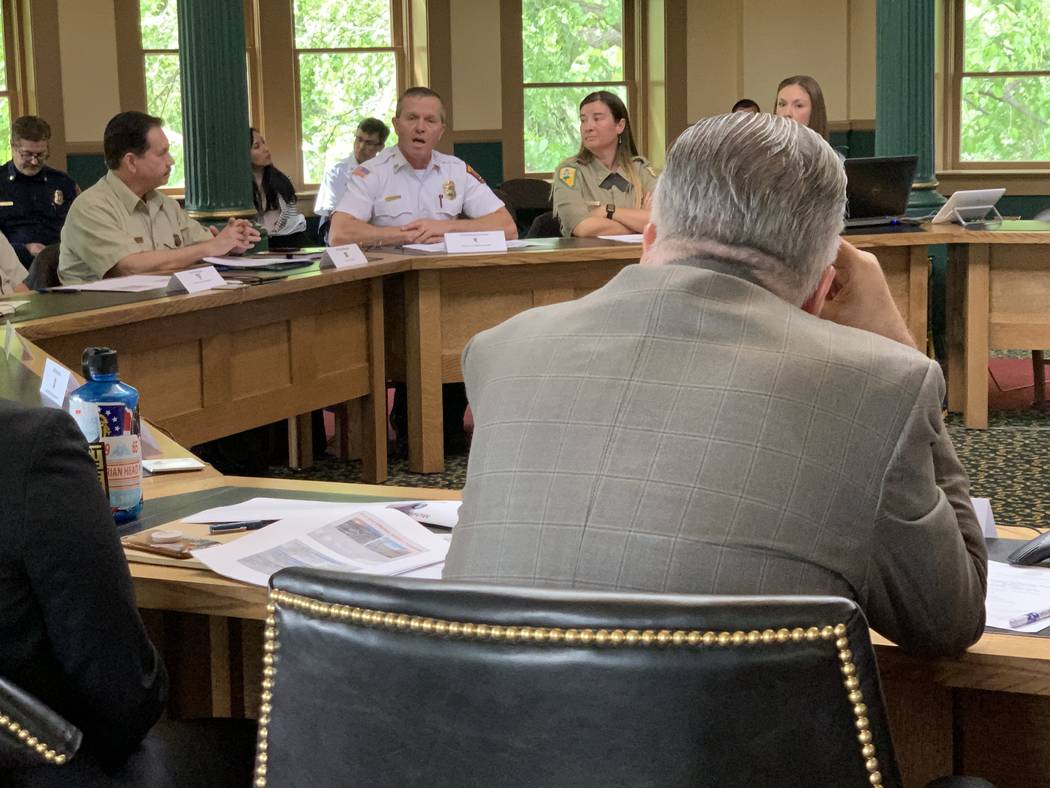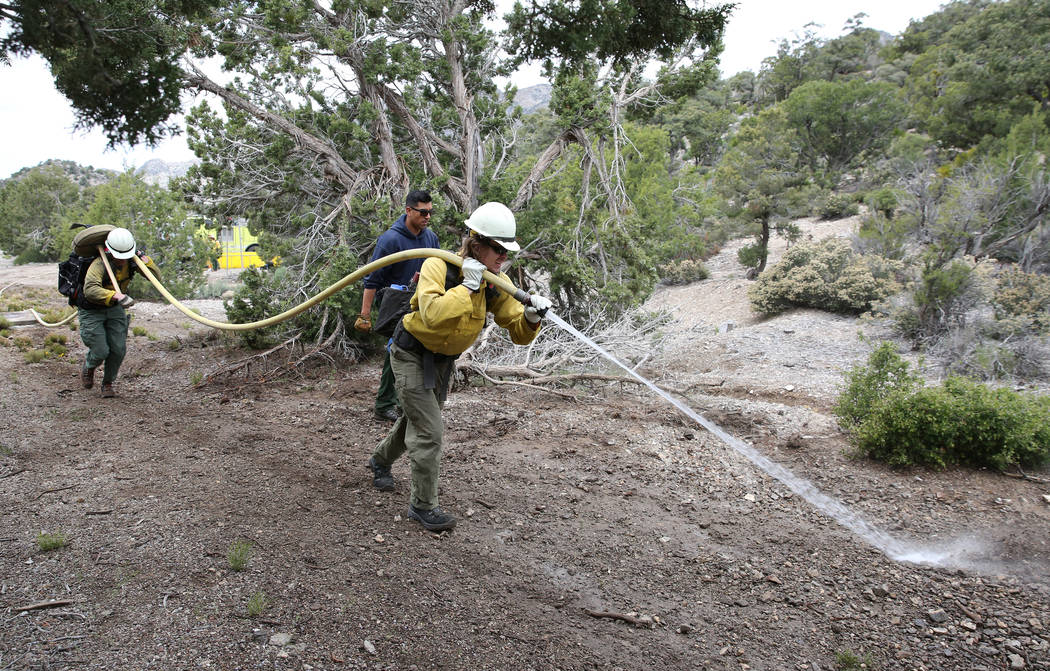Forestry officials say wildfire risks ‘above normal’ for Nevada
CARSON CITY — Southern Nevada will see “above normal, significant wildfire potential” in the coming months because of excess growth of grasses and other fuels fed by this year’s above-average precipitation, fire and forestry officials told Gov. Steve Sisolak in a briefing Tuesday.
“That’s not normal, and usually the grass growth is a lot less in the interspaces down there,” Kacey KC, state forester and fire warden for the Division of Forestry, told the governor, adding later: “They are very rarely above normal, if ever, in the last 10 years. So this is a high-risk time for them.”
The annual risk and mitigation briefing by state and federal agencies was the governor’s first since taking office in January. Ironically, it came on a day when the state capital saw brief snow flurries — a continuation of a weather pattern that brought record and near-record snowfall to the northern part of the state this year.
The cooler, wetter weather is expected to reduce fire risk at Nevada’s higher elevations, but the statewide threat remains above average, officials told the governor.
In the past two years, 2.3 million acres burned in Nevada, according to figures kept by the National Interagency Fire Center. Last year, for the first time, more than half the 662 fires, and more than half the 1 million acres burned were the result of human rather than natural causes.

“The most concerning is that they’re expecting some severe wildfire conditions, both north and south. Precipitation led to a lot of that,” Sisolak said after the briefing. “When you see how many of these are human caused, it gives you pause.”
KC, the state firewarden, said the state saw 4 million acres burn in wildfires from 1980 to 1999, averaging about 200,000 acres a year. The worst year in state history was 1999, when 1.8 million acres burned. From 2000 to last year, KC said, 9.5 million acres have burned, averaging 500,000 acres annually and more than double the fire extent from the preceding two decades.
As in other areas of the west, fires no longer are confined to a season and can happen at any time of year, she said.
In 2013, the Carpenter 1 fire burned nearly 28,000 acres on Mount Charleston and prompted the evacuation of residents from the mountain. It burned everything from pine trees on the top of the nearly 12,000-foot mountain to Joshua trees at its base, and took hundreds of firefighters more than a month to finally extinguish. The fire was followed by unprecedented flooding as storm water cascaded down hills stripped bare of vegetation.
Contact Bill Dentzer at bdentzer@reviewjournal.com or 775-461-0661. Follow @DentzerNews on Twitter.

































